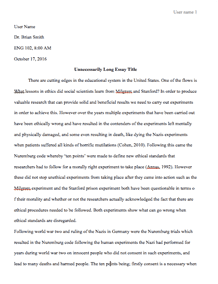

Social perception is a representation of peoples' interpretation of situations as a cognitive process. It is, therefore, significant to consider the impact of social perception on the organization behavior since individual's motivation and other external factors like size and familiarity takes center stage. However, stereotyping and halo effects arise as a cause of social perception. Stereotyping defines the tendency of perceiving people as belonging to a particular category while Halo effects represent the attitude that bases on a single trait (Robbins & Judge 2015). Social perception also leads to attribution, a key aspect of organizational behavior. Employees use attribution to justify their actions and reactions, and how they are affected by acts of others. Additionally, social perception results in self-serving bias and fundamental attribution errors, people take credit for being successful and not being a failure, attributing it to situations. Selective perception, on the other hand, leads unequal treatment of subordinates at the workplace, hence a need for objective measures to control organizational behavior (Robbins & Judge 2015). Impression management has taken a course on the study of organizational behavior. Impression management involves controlling and constructing perceptions, an effort to control personal behaviors that other people have formed against you. As a result, it improves the self-presentation. For example, when employees at work avoid responsibilities due to a negative event or lame excuses, employing demotion-preventive tactic is necessary. In this case, if an employee doesn't comply he or she risks an apology or disassociation. In another scenario, an attempt to increase responsibility is crucial in creating an enabling environment using Promotion-enhancement as a strategy. Thus, impression management helps in creating positive behavior outcomes for an organization.
Managing diversity is equally important as the social perception in organizational behavior because it promotes equality and fairness at the workplace. Failure to understand how diversity affects social conditioning and behaviors of other people leads to discrimination. It is important therefore important to foster diversity to control organization behavior because employs will have a standard line of understanding and cooperation despite the differences in age, ethnic group, language, race, sexual orientation, physical and mental status(French, 2011). More so, individual differences should be utilized to raise the value of workers and the organization, in general creating a successful multi-cultural society. Managing diversity creates awareness to why and how people behave differently. The reason for managing diversity is to avoid cultural bias and negative attitudes against a section of individuals. Better policies are formulated to protect the rights of those who are victimized. For instance, embracing diversity by corporate is a law in the United States. The proponents of organizational diversity argue that diversity leads to innovation since a class of people with same skills fails to re-engineer new skills and ideas. Such a groupthink undermines creativity efforts (French, 2011). The 21sst century is a remarkable period of dynamic technology, an organization that needs to beat future business turbulences enhances diversity. Diversity maintains the competitive edge by making multi cultural organizations adaptable to unforeseen events. Understanding demographics shape the global consumer markets to increase the output. Besides different cultures brings into excellence the organizational development strategy.
References
French, R. (2011). Organizational behaviour. Hoboken, N.J: Wiley
Robbins, S. P., & Judge, T. (2015). Organizational behavior. Boston: Pearson.
Request Removal
If you are the original author of this essay and no longer wish to have it published on the customtermpaperwriting.org website, please click below to request its removal:


